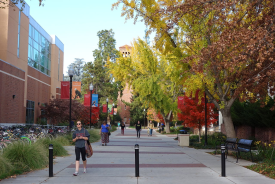Scientists have officially classified a new digestive organ in the human body. Apparently, it has been hiding just beside our stomachs and colons for centuries.
According to Science Alert, the new organ is named as the mesentery. It has previously been thought as made up of separate structures but, actually, it's a continuous organ.
Its reclassification has been published in The Lancet Gastroenterology & Hepatology. J Calvin Coffey, a researcher from the University Hospital Limerick in Ireland, was the one who discovered the new digestive organ.
The mesentery is a double fold of peritoneum, which is the lining of the abdominal cavity. It is the one that attaches the intestine to the wall of the abdomen.
Leonardo da Vinci drafted one of the earliest descriptions of the organ. However, it was ignored for centuries and deemed insignificant. Coffey and his colleagues made the discovery that the mesentery is a continuous organ. It was made official just this month.
Live Science reported that the reclassification of the mesentery is vital in knowing how it works. This can lead to more understanding of abdominal diseases.
It was noted that the mesentery's continuous nature possibly plays a major role in making disease spread from one part of the abdomen to another. Aside from being able to study disease, this latest finding may be able to lead to new approaches to surgery.
TIME added that the specific function of the mesentery is still unknown. There are still a lot of studies to do on this organ which could help us understand how the digestive system works and why it does not work.
Meanwhile, Stanford scientists recently conducted a study focusing on what biological forces are at play in our bodies. They fed nanoparticles to worms through bacteria. These nanoparticles have a specific glow when a near-infrared laser strikes it and changes color when the environment around it changes.
This way, these nanoparticles can provide real-time information about the forces affecting them while inside the worm's stomach. Eventually, this is expected to be able to help identify the forces at play for processes such as wound healing and cancer growth.
© 2025 University Herald, All rights reserved. Do not reproduce without permission.








